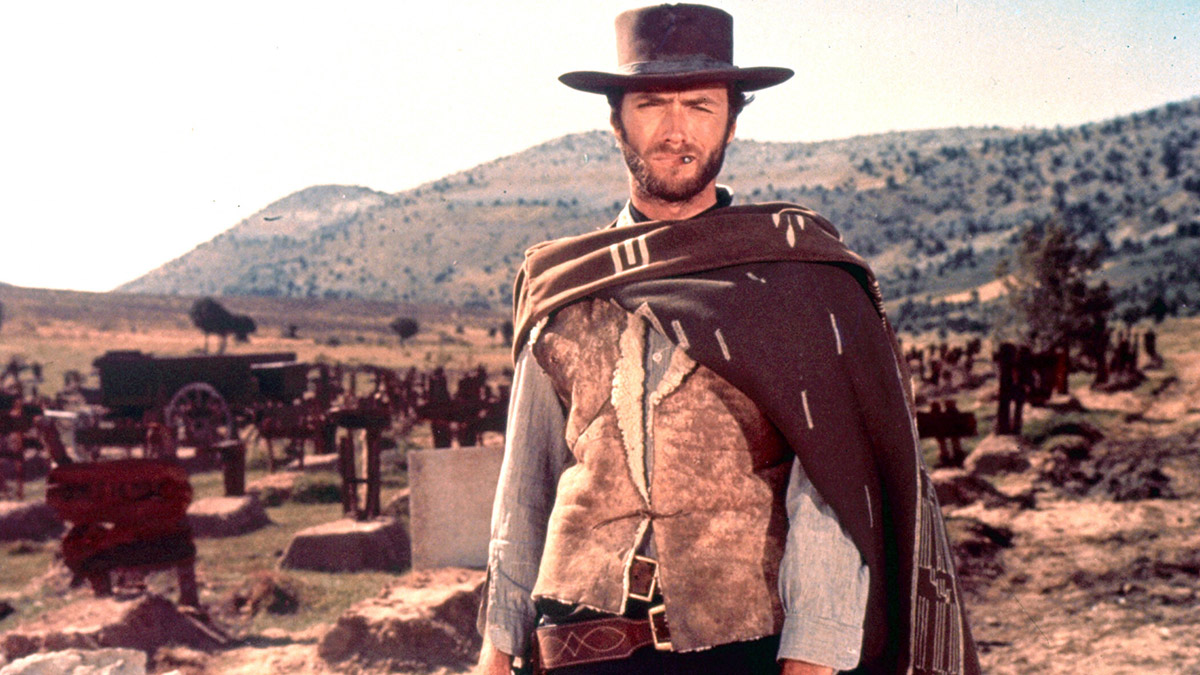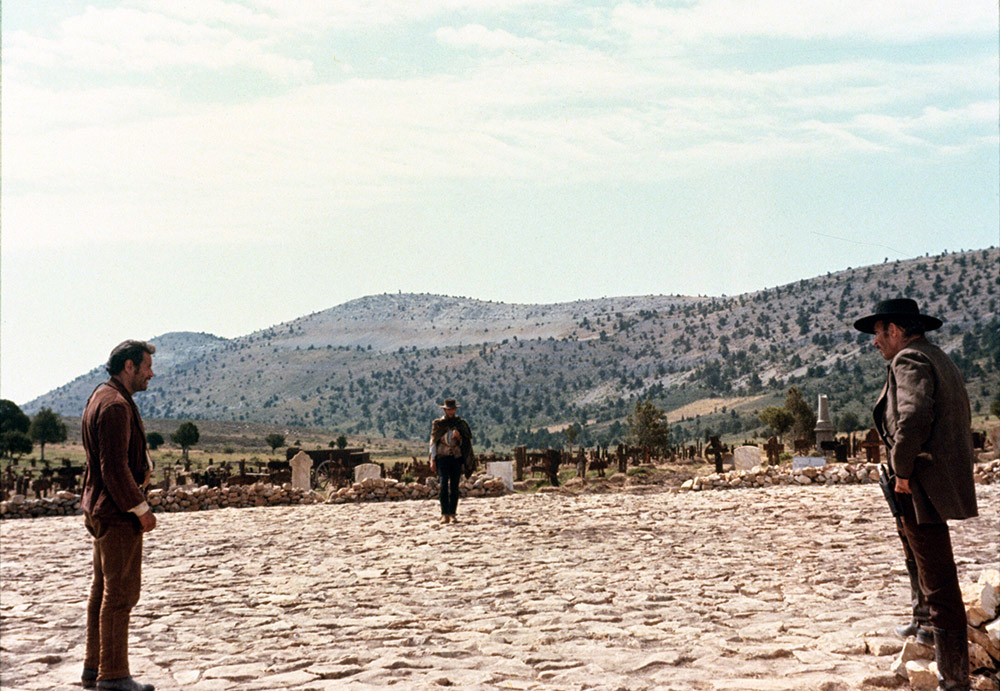
(c) Photofest / Getty Images
“The Good, the Bad and the Ugly” A picaresque romance in which three thugs go on a treasure hunt.
Sergio Leone's theatrical technique explodes from the opening
From the very start of the film, we can enjoy the "Leone style." The first scene is an extreme close-up of a hitman against the backdrop of a vast wilderness. By filling the screen with his "old man face," which can hardly be called photogenic, "The Good, the Bad and the Ugly" is a human drama about nameless men.
Then, the silhouettes of two men, resembling peas, slowly coming from afar on horseback. In a sharp change from before, humans were completely buried in a part of the landscape. The performance is as if to say, ``Such human activities are nothing but small events in the larger history.'' Leone's style of dramatization is to express the maximum and the minimum at the same time through cutbacks.
Moreover, there are no lines in the first 10 minutes of this movie. This explanation may make it seem like an extremely stoic and stiff movie, but that is not the case. "The Good, the Bad and the Ugly" is one of the most humorous works in Sergio Leone's filmography. Of course, the reason for this is the presence of Eli Wallach, who plays Tuco.

"The Good, the Bad and the Ugly" (c) Photofest / Getty Images
Looking back, "A Fistful of Dollars of For a Few Dollars More" is a story about a nameless man played by Eastwood and Colonel Mortimer played by Lee Van Cleef who form a fleeting friendship and wipe out gangsters. In Leone's films, Eastwood embodied a silent Jack Reacher and Van Cleef embodied a ruthless professional (in other words, both were reclusive!). That's why his films were lyrical yet had a somewhat dry atmosphere.
However, the "third man" Eli Wallach-Tuco, who appears in "The Good, the Bad and the Ugly," instantly transforms that dry atmosphere into something hot and humid. He's cunning and selfish, but somehow lovable. His clownish character is reminiscent of Sancho, the squire in "Don Quixote." The real protagonist of this film is definitely Wallach, not Eastwood.

